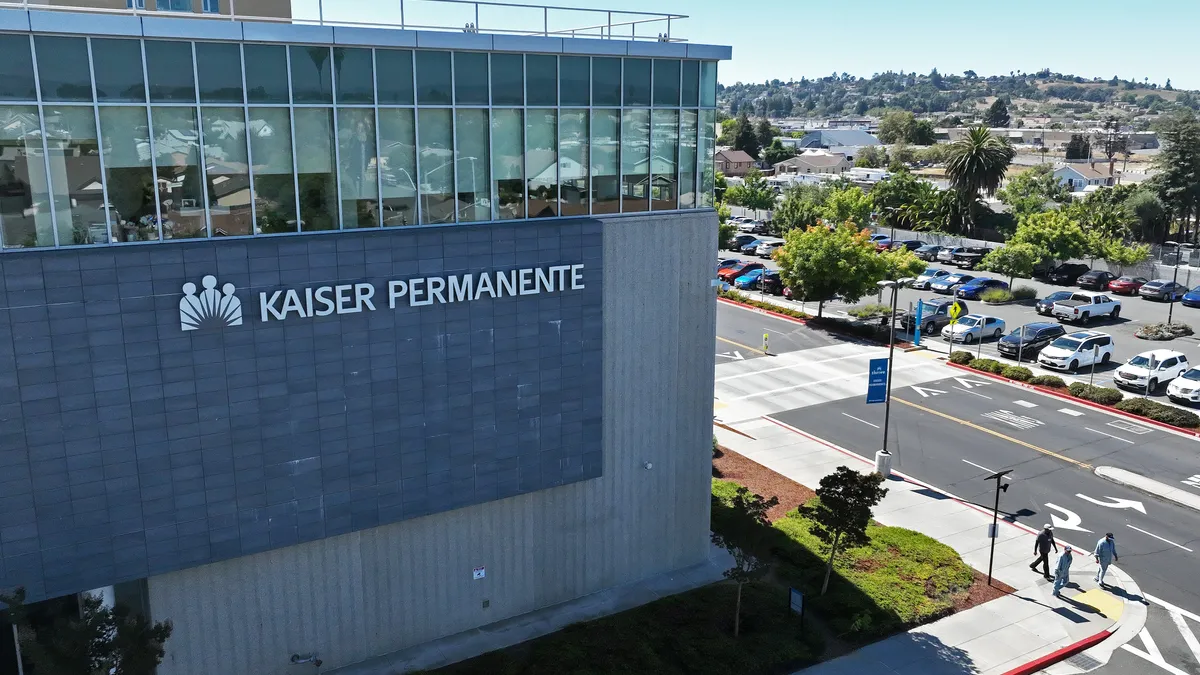Dive Brief:
- Kaiser Permanente recorded just over $1 billion in operating income for the second quarter, up 13% from last year, according to an earnings report released Friday.
- Although Kaiser CEO and Chair Greg Adams said he was “pleased” with the results, the nonprofit giant noted its operating income tends to be highest in the first half of the year, before flattening in the back half.
- Expenses rose by almost $3 billion year over year in the second quarter. Kaiser said it’s feeling some pressure from higher-than-expected utilization in its health plan and heightened care costs related to high acuity cases, but that it was able to mostly offset costs by managing discretionary spending.
Dive Insight:
Kaiser owns more than 50 hospitals and employs roughly 280,000 total employees, including those employed by Risant Health, its nonprofit health system launched last year.
Kaiser recorded a 3.2% operating margin, up from 3.1% the year prior. Operating revenues rose more than 10% year over year to $32.1 billion. Expenses also grew from $28 billion in the the second half of 2024 to $31.1 billion in 2025.
Net income rose to $3.3 billion, compared to $2.1 billion in the second quarter of 2024. Membership in Kaiser’s health plan was up roughly 600,000 over the year before, and “favorable financial market conditions” boosted nonoperating income to $2.2 billion, $1 billion more than the prior year period.
Kaiser spent $1.1 billion on capital spending, including technology and facility investments — an increase compared to the $889 million spent last year. That investment came even as some nonprofits are opting to slow capital spending amid financial uncertainties like looming tariffs.
Adams said Kaiser is taking a hard look at its operational strategy to stay ahead of industry headwinds, including fallout from President Donald Trump’s One Big Beautiful Bill Act.
The megabill, signed into law in July, includes $1 trillion in healthcare cuts over the next decade, including reductions to Medicaid state-directed payments and provider taxes.
“While we are pleased with our second-quarter performance, like others in the health care industry, Kaiser Permanente is navigating a shifting landscape marked by an aging population and evolving consumer expectations, as well as the recently enacted federal budget reconciliation bill, which will reduce health care coverage and funding as health care costs rise,” Adams said in a release.
To meet the headwinds, Kaiser plans to redesign its cost structure, including prioritizing value-based care.
Kaiser’s performance is in line with many of its nonprofit peers, according to research from Fitch Ratings published last week. The credit rating agency said operating margins are improving compared to this time last year, as the labor market cools and markets rebound.
However, uncertainty from legislative changes in Washington hang overhead. Nonprofit health systems’ longer-term outlooks are less certain, due to legislative changes, demographic shifts among patients and persistent inflationary pressures, according to Fitch.














